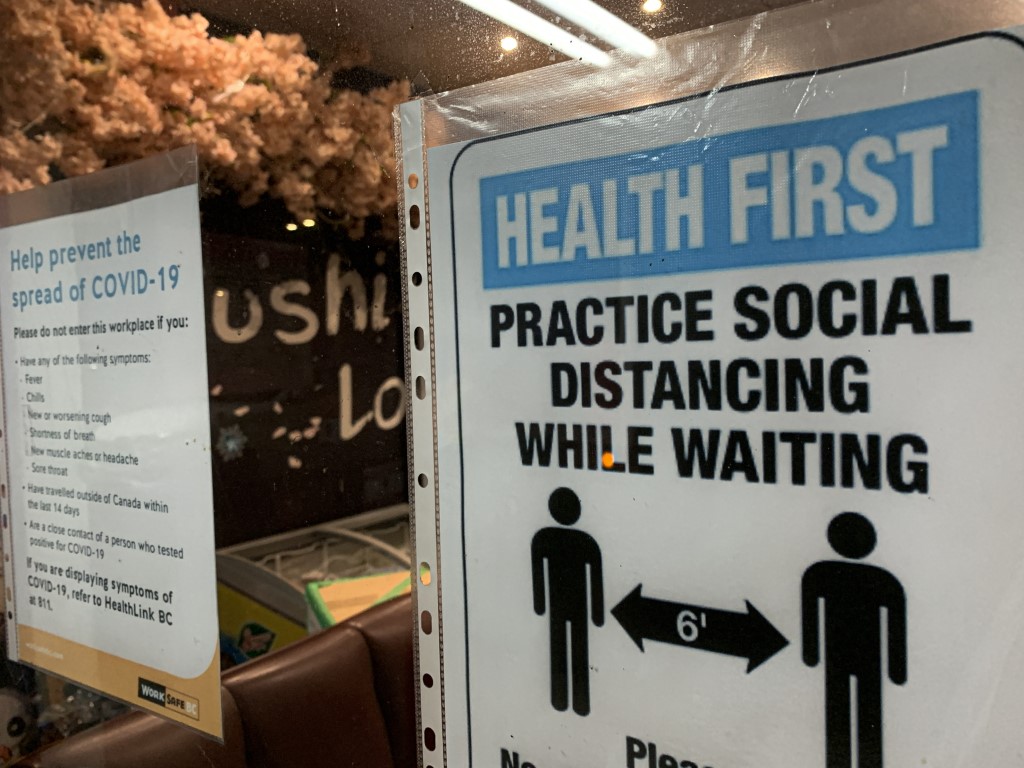
Health order inconsistencies
By Timothy Easling, Senior Columnist
A religious gathering, regardless of whether the location is little more than a few thousand square feet in a small church or thousands upon thousands of square feet in a cathedral, is banned—On an ironic note, AA meetings are permitted, even though many occur in churches.
COVID-19 total deaths remain relatively low as mandatory mask orders and lockdowns become common across Canada. It is important to keep in mind that the government data shows COVID still predominantly affects those of advanced age and weakened states, not those of average age or really even those who are over 60 but healthy.
British Columbia has suffered 86 deaths from 4,914 cases (1.8 percent fatality rate) since December 1 as Provincial Health Officer Bonnie Henry’s two-week health order from November 19 has seen its second extension—now supposedly to end on January 8, 2021 at midnight. The population of the province is 5,147,712.
On November 30, Henry stated that the majority of deaths were in long-term care. Since then, as throughout the entire pandemic, the government has still not taken any measures to specifically protect the most vulnerable Canadians. Alternative actions such as complete isolation and healthcare workers who could remain 24/7 in these closed systems to care for and protect Canada’s at-risk citizens have not seen implementation. Instead, the country has seen broad lockdowns that appear to have little-to-no effect on these vulnerable populations as the death counts continue to climb.
During the initial wave until June 1, BC suffered 164 deaths over 2,573 cases. From June 1 until September 10, the province had an additional 49 deaths over 4,151 cases. Over the last few months, the province has seen a massive uptick in masking, restrictions, and lockdowns, but the virus does not appear to be affected by government efforts to crack down on it. The entire year of COVID in BC until September 10 added up to 6,724 cases and 213 deaths. However, since then and the various restrictions, there have been 31,428 cases and 312 deaths.
Also of note is that the provincial health orders are confusing when it comes to certain gatherings.
“The order does not restrict formal meetings. They can continue to operate with COVID-19 safety protocols and a maximum of 50 people in attendance. This includes: City council meetings, Alcoholics Anonymous, Group support meetings, Business meetings,” however, “Religious in-person gatherings and worship services are suspended under the order.”
A religious gathering, regardless of whether the location is little more than a few thousand square feet in a small church or thousands upon thousands of square feet in a cathedral, is banned—the number of people is irrelevant, even if it’s just five people in a giant room. The rules change again if it’s a wedding, funeral, or baptism though; if such is the case, 10 people are allowed to attend. Simultaneously, up to fifty people meeting for “business” in a few hundred square feet is fine. On an ironic note, AA meetings are permitted, even though many occur in churches.
Grocery stores, retail outlets, and restaurants (with no masks) are allowed remain open if they have COVID safety measures in place such as hand sanitizing stations, screens, and spaced-out seating, but religious institutions—despite being critical to many citizens’ mental health—have not been afforded the same opportunity.
On to stats for the week.
Unless stated otherwise, all statistics in this piece are from available government data with age demographics (99.9 percent of cases). From December 1 to 7 there have been 867 deaths, and 96.1 percent of those (833) are from those 60-and-up—often in long term care homes (LTCs), acute care, or assisted living, and with multiple comorbidities; the risk of dying for Canadians who are neither of advanced age nor weakened states continues to remain low. Canada has suffered 12,626 deaths from COVID-19—and saw 8,511 deaths in 2018 from Influenza and pneumonia. The population of Canada is 38,005,238.
Countrywide from December 1 to 7, the 0-39 age bracket suffered 7 more deaths, the 40-49 age bracket, 7, and the 50-59 age bracket, 20. The low fatality rate of the disease for those not of ill health continues to be illustrated by the thousands upon thousands of cases recorded with no consequences; the 0-39 age bracket saw 25,101 more cases, the 40-49 age bracket had 6,994 more, the 50-59 age bracket observed 6,265 more, and the 60+ age bracket recorded 9,783 more. Just from the last week of cases, the fatality rate for each bracket in relation to its case numbers was 0.03 percent (0-39), 0.1 percent (40-49), 0.32 percent (50-59), and 8.5 percent (60+). Further emphasizing the low risk of death to many Canadians, there were 38,360 cases from 0-59 and 34 deaths—which works out to a fatality rate of 0.09 percent.
Hospitalization increases remained relatively steady with previous weeks—and with almost none of them (again, for those not of weakened states) resulting in death. The vast majority (68.9 percent) of hospitalizations were from the 60-and-up age bracket (1,954 more) with the lower age brackets registering small totals: 0-39—416 more, 40-49—211 more, 50-59—316 more. ICU admittances remained much the same with only 498 more. Of those 498, 64.7 percent (322) were from the 60+ age bracket. The remaining 176 cases were divided among the lower age brackets: 0-39—37, 40-49—46, and 50-59—93.
Influenza (responsible for 8,511 deaths in 2018—approximately half of what COVID is on pace for) has been drastically down this year. The average from week 35-48 over the last six years has been 2,170, but this year has seen only 32. Based on the data, there is a likelihood that COVID-19 numbers have been merged with Influenza figures.



